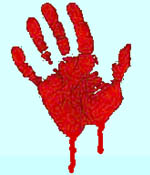
Howdy | |||||||||||||||||||||||||||||||||||||||||
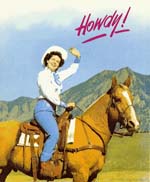 Howdy: — Let's read the Talmud together: By finding out about each others' faiths, Jews and non-Jews can build bridges to understanding.

HRH Prince Charles put his shoulder behind a scheme to aid understanding between people of different faiths. 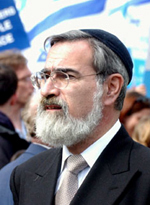
Professor Jonathan Sacks, The Very Reverend the Chief Rabbi of the United Hebrew Congregations of the British Commonwealth [also Sachs]. 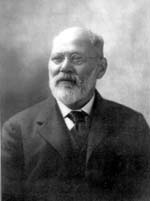
Rabbi Michael L. Rodkinson (born Michael Levi Frumkin), author of History of the Talmud and New Edition of the Babylonian Talmud. Unfortunately, Rabbi Rodkinson published his translation without folio numbers, making it difficult to compare his text with other editions of the Talmud. 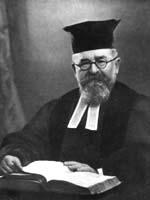
The late Dr. Joseph Herman Hertz, the Very Reverend the Chief Rabbi of the British Empire, 1913 - 1946. 
You can help in the battle for Truth, Justice, and the American Way! Fight the forces of censorship and suppression of the Talmud, and bring about understanding between peoples of different faiths. 
Theodore Herzl, Hungarian lawyer of the 19th Century and founder of modern Zionism, apparently considered the great experiment — the attempt to create compatibility between Jews and people of other religions — a failure. 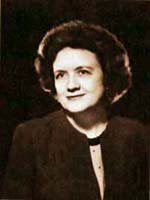
Elizabeth Kirkpatrick Dilling, American writer and public speaker, author of Jewish Religion: Its Influence Today. Addressing the Pharisaic teachings of the Talmud (see What Is the Talmud?) Dilling writes:  Alyza Lewin, a supporter of the National Institute for Judaic Law, endorses the goal for broad and open knowledge of the Talmud. Quoted by Jewish Week, Alyza Lewin states, "The idea is to make Jewish law accessible to the public — to jurists, legal scholars, the press, anybody." (22) 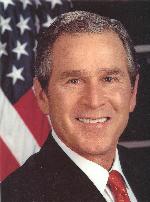
US President George W. Bush sent "greetings and applauded the institute for promoting an 'understanding of Judaism's rich tradition of legal thought. As we face new challenges and welcome new opportunities, our society must continue to promote good character and strong values. Through the study and teaching of Jewish law and philosophy you are contributing to a growing culture of service, citizenship, and responsibility in America,' Bush wrote." |
In Great Britain, the Chief Rabbi of the United Hebrew Congregations of the British Commonwealth, Professor Jonathan Sacks, has come up with a wonderful idea: We should learn about each other's faiths. Rabbi Sacks' idea was endorsed by the Prince of Wales and other religious leaders. (1) Rabbi Sacks follows in the footsteps of another outspoken rabbi, Rabbi Michael Rodkinson, who did what he could during his lifetime to share the Jewish religion among Jews and non-Jews alike. Rabbi Rodkinson's English translation of the Talmud was published between 1896 and 1903, and reissued in 1918. (32) Christian theology and Jewish theology having really followed two parallel paths, the history of either cannot be understood without the history of the other. — Rabbi Michael L. Rodkinson (2) In a world torn by strife and warfare (much of it between people of different faiths), no person of goodwill could disagree with Rabbi Sacks: that we should learn about each other's faiths. The first project of Come and Hear™ is to assist in this mission. It is a modern truism that the truth is revealed by comparing and contrasting opposing ideas. We can gain nothing by closing our eyes to religious literature; we gain by reading, discussing, and understanding. No better result could be achieved than by open and informed discussion of the Talmud, the book that lies closest to the heart of Judaism. "One of the Wonders of the World"Come and hear what some renowned Talmudic scholars have said about the Talmud: … the Talmud is one of the wonders of the world … It still dominates the minds of a whole people, who venerate its contents as divine truth … — Rabbi Michael L. Rodkinson (3) Religion in the Talmud attempts to penetrate the whole of human life with the sense of law and right. Nothing human is in its eyes mean or trivial; everything is regulated and sanctified by religion. Religious precept and duty accompany man from his earliest years to the grave and beyond it. They guide his desires and actions at every moment. Food and sleep, civic duty and family life — all are under discipline of the Torah, a discipline accepted freely and joyfully. While every religion attempts such regulation, the Talmudic system represents this striving of the religious idea in its perfection. 'In our eyes,' says Arsène Darmsteter, 'this is its greatest title to the respect and consideration of thinkers. In Judaism we have thus the completest, and consequently the most perfect, expression of the religious idea.' — The Very Reverend the Chief Rabbi of the British Empire, the late Dr. Joseph H. Hertz (4) Speaking of how the Talmud helped Jews through the centuries of persecution and darkness, Rabbi Dr. Hertz said: It saved Israel from intellectual and moral degradation. — Rabbi Dr. Hertz (5) If the Bible is the cornerstone of Judaism, then the Talmud is the central pillar, soaring up from the foundations and supporting the entire spiritual and intellectual edifice. In many ways the Talmud is the most important book in Jewish culture, the backbone of creativity and of national life. No other work has had a comparable influence on the theory and practice of Jewish life, shaping spiritual content and serving as a guide to conduct. — Rabbi Adin Steinsaltz (6) Rabbi Adin Even Israel Steinsaltz is the founder of the Israel Institute for Talmudic Publications, and has enjoyed the backing of Israeli presidents and prime ministers; he is a recipient of Israel's highest civilian honor, the Israel Prize. He is currently translating the Talmud into English, French, and Russian. Let us continue with other scholarly statements on the importance of the Talmud. This from the Universal Jewish Encyclopedia: The Talmud is undoubtedly one of the most remarkable literary productions of all times. It is an encyclopedia covering the whole scene of human life. It is almost impossible to convey to one who has not spent years in the study of this complex work an idea of its true nature, as even the most exact translations cannot catch the inner spirit of the Talmud … As a repository of the Oral Law, the Talmud's authority is regarded as divine by Orthodox Jews, and hence it is held to be binding and immutable. Conservative and Reform Jews, however, do not recognize the absolute binding power of the Talmud, although they acknowledge the great part it has played in determining Jewish religious ideas and observances. — Herschel Revel, for The Universal Jewish Encyclopedia (7) Gentiles Welcome to Study the TalmudRabbi Rodkinson welcomed Gentile students of the Talmud. One hundred years ago, he wrote: We are also glad to notice that among Gentiles the study of the Talmud is more or less spreading, as we have the experience that a great number of Gentiles and almost all the theological seminaries and public libraries subscribed to the Talmud, and also many queries concerning it frequently came to us from Gentiles. This all shows that the study of the Talmud among Gentiles is not very rare. — Rabbi Rodkinson (20) Talmud Relevant TodayNow let us turn to Rabbi Dr. Jacob Neusner, a contemporary and prolific writer on Judaism: The Bavli [Babylonian Talmud] has formed the definitive statement of Judaism from the time of its closure to the present day. The excellence of its composition, the mastery and authority of those who everywhere studied it and advocated its law, the sharpness of its exegesis and discussion, the harmonious and proportional presentation of all details, these virtues of taste and intellect may well have secured for the document is paramount position … The Bavli served from its closure as an encyclopedia of knowledge and as a summa of the theology and law of Judaism. — Rabbi Dr. Jacob Neusner (8) (emphasis added) Rabbi Yitzchok Adlerstein is the director of Project Next Step of the Simon Wiesenthal Center in Los Angeles and a professor of Jewish Law and Ethics at Loyola Law School. Rabbi Adlerstein comments upon a 1999 brief submitted to the US Supreme Court concerning the death penalty. The brief, based wholly on Talmud law, urged that certain principles of Talmud law should be adopted by the US. Interpreting the remarks Orthodox advocate Nathan Lewin, (24) Rabbi Adlerstein writes: … Lewin builds his case on the strength of what likely is the world's oldest continuously-practiced legal code. He holds up the performance of Florida's temperamental electric chair to the scrutiny of the Jewish Talmud, the backbone of Jewish law for the last two millennia. — Rabbi Adlerstein (23) Some Question the TalmudWhile many praise the Talmud, many have questions about it. The late American Protestant writer Elizabeth Kirkpatrick Dilling, author of The Jewish Religion: Its Influence Today, (31) is one of those. (Ellipsis indicates omitted text.) The Babylonian Talmud is the law for so-called Judaism. However, its pornographic, anti-Gentile and anti-Christian doctrines have often caused hostility against it. … — Elizabeth Dilling (21) Dilling deplores what she saw as the Talmud's hatred of Jesus Christ and Christians; she writes that the Talmud depicts Jesus Christ as a sorcerer who performed magic with his "membrum" (euphemism for male sexual organ; see Jesus' Membrum in the Talmud, [17]), and the bastard son of a woman who "played the harlot with carpenters." (10) Dilling charges that the Talmud and the Jewish religion encourage the exploitation of non-Jews. She deplores the Kol Nidre prayer, (25) which she says is used as a mechanism by Jews to renounce their vows. Dilling also alludes to the belief that the Jewish people themselves are the Messiah. (11) Skepticism Permitted in Talmud StudyDilling says the Talmud and the Jewish religion approves of pederasty, bestiality, murder, incest, and intercourse with the dead; (12) that it embraces magic, numerology, and "every pagan trick of dethroning God and enthroning individual spirits," (13) and advocates tree and star worship. (14) Ironically, in making those observations, Dilling was herself following the best tradition of the Talmud, as explained by Rabbis Adin Steinsaltz and Jacob Neusner: There is no effective way of pinpointing the Talmud's influence on the Jewish people and separating it from other influences, but it is possible to point to several basic facts. Talmudic scholarship is to a certain extent self-contradictory, a type of "sacred-intellectualism." It places unparalleled emphasis on the theoretical, analytical, and critical aspects of human thought. No individual can study the Talmud without being or becoming an eternal skeptic; the form of study itself is based on a series of questions, and the student himself is expected to submit his own questions and voice his own doubts and problems … The questioning, searching, and skeptical man is not excluded from the circle of believers; he becomes, rather, the spokesman of the central work of the Jewish religion, the prime source for halakhah and daily conduct. — Rabbi Steinsaltz (18) The Talmud is open-ended and invites your to join in its discussion. The main trait of the Talmud is its argumentative character, its argument, back and forth. Once you have not only a proposition but the reason for it, then you may evaluate the reason, criticize it, or produce a contrary proposition based on a better reason and argument. And since the Talmud shows its hand at every point, its framers indicate that they want us to join in. And we do, and we do. — Rabbi Dr. Neusner (19) The study of the Talmud, then, must inevitably lead to its critical analysis. Dilling became an "eternal skeptic," as Steinsaltz predicts will happen to any student. She joined in the discussion and produced contrary propositions. In doing so, she accepted the Talmud's invitation to criticize, as described by Rabbi Dr. Neusner. It seems, then, that Dilling was a sincere Talmud student. The Context ProblemThose who raise questions about the Talmud are often charged with dishonestly taking Talmud quotations out of context. Rabbi Rodkinson addressed that very issue 100 years ago. … The Talmud is free from the narrowness and bigotry with which it is usually charged, and if phrases used out of their context, and in a sense the very reverse from that which their author intended, are quoted against, it, we may be sure that those phrases never existed in the original Talmud, but are the later additions of its enemies, and such as never studied it. — Rabbi Michael L. Rodkinson (15) Elizabeth Dilling took to heart Rabbi Rodkinson's statement concerning context. When her books were published, 60 years after Rabbi Rodkinson's remarks, photocopies of entire pages from the Soncino Talmud were included, with her handwritten notes in the margins. (31) Context Controversy ContinuesOne hundred years after Rodkinson made his thoughtful remarks, and 60 years after Elizabeth Dilling provided context with her copies of the Talmud text, the Anti-Defamation League of B'nai B'rith (ADL) issued a press release and a position paper The Talmud in Anti-Semitic Polemics concerning misrepresentation of the Talmud. The press release contains this statement: ADL's report, The Talmud in Anti-Semitic Polemics, exposes how certain passages from the Talmud and other traditional Jewish texts are used to foment anti-Semitism through distortions and fabrications. The authors of anti-Talmudic polemics seek to paint Judaism as an immoral religion that preaches hatred for non-Jews and promotes obscenity, criminality, sexual perversion and other immoral acts. Widely available on the Internet, such anti-Talmudic tracts "are clearly designed to provoke hostility toward Jews," Mr. Foxman said. — ADL (28) The Talmud in Anti-Semitic Polemics) states: In distorting the normative meanings of rabbinic texts, anti-Talmud writers frequently remove passages from their textual and historical contexts. — ADL (29) When writers take quotations out of context constitute, they abuse the trust of their readers. A single sentence is rarely enough to show intent of the author, yet in many venues, that is all that is provided. When this happens, we agree with the ADL. On the other hand, the ADL's The Talmud in Anti-Semitic Polemics avoids the hard issues. While mentioning Elizabeth Dilling by name, (30) the ADL fails to mention that Dilling did provide context. At the same time, the ADL fails to address the questions Dilling raised. The ADL does not help its cause. This is most unfortunate. Given the resources at her disposal, it is hard to fault Dilling in her attempt to provide context. Dilling did not have the advantage of the World Wide Web and the miracle of hypertext. Perhaps the problem was that Dilling could not provide enough context. Come and Hear™ now answers the challenge of the context problem. At this site we provide entire tractates (books) of the Talmud from which Elizabeth Dilling quoted. Those tractates include Berakoth, Shabbath, Yebamoth, Kethuboth, Nedarim, Nazir, Sotah, Gittin, Baba Kamma, Baba Mezi'a, Baba Bathra, Sanhedrin, Abodah Zarah, Horayoth, Niddah, and Tohoroth. Where Dilling reproduced pages from other works, such as the Universal Jewish Encyclopedia, Rabbi Dr. Finkelstein's The Pharisees: The Sociological Background of their Faith, and Rabbi Rodkinson's History of the Talmud, we have in many cases provided a larger section of the original text to give the reader additional context. What is the truth about the Talmud and Judaism, and the claims of the ADL against Elizabeth Dilling? You can decide for yourself. Scholarly BackgroundSearch the Internet, and you will find defenders of the Talmud who state that the Talmud is a complex subject and ordinary people lack the scholarly background to evaluate it. Gil Student at the faithweb.com writes: There are many lies circulating the internet about the Jewish Talmud. These allegations are supported by "direct quotations" from the Talmud that are frequently wrong or taken out of context. However, most people lack the scholarly background to verify these claims. Most people have no way of knowing that these accusation are false and malicious. What we are attempting is to demonstrate in detail how these accusations are both wrong and intentionally misleading. We are trying to show to the world the real truth about the Talmud. — Gil Student (27) (emphasis added) Defenders of the Talmud also allege that, due to lack of scholarship, critics misunderstand the nuances of the Talmud text, and that they fail to distinguish differences between Jewish law ("halachah") and homiletic stories ("haggadah"). Come and Hear™ has stepped in to fill this need, too. The Come and Hear™ hypertext includes all of the scholarly footnotes written by the Soncino Talmud experts. These footnotes constitute a running commentary on the literal Talmud text. We also provide essays, backgrounders, and commentaries written by top Talmud scholars, including Rabbi Dr. Louis Finkelstein; and Soncino Talmud Forewords and Introductions written by the Very Rev. the Chief Rabbi Dr. Joseph H. Hertz, editor Rabbi Dr. Isidore Epstein, Rabbi Dr. H. Freedman, Rabbi B.D. Klein, Rev. Dr. Abraham Cohen, Rev. Dr. Israel W. Slotki, and rabbinical scholars Dr. E. Kirzner, J. Shachter, Morris Ginsberg, and Maurice Simon. The Epilogue was written by the Very Reverend the Chief Rabbi of the British Commonwealth, the late Israel Brodie. At Come and Hear™, the reader has access to some of the best Talmud scholarship ever available. In addition, we have written America Under the Talmud: Will It Work for US? an on-line book of 30 studies on issues important to the student of the Talmud. We also provide a collection of supplementary materials to enrich the student's study of the Talmud, the Soncino Talmud Glossary, Abbreviations, and a Come and Hear™ Search Engine for the Talmud text. In short, Come and Hear™ is a scholarship-friendly environment. Can't We All Get Along?What are the real differences in world view between Jews and non-Jews? Can those differences be resolved, and can Jew and non-Jew live in harmony? Or should Jews and non-Jews live separately, as the founder of Zionism, Theodore Herzl, urged? The solution is Exodus, the gathering together of the people out of dispersion — their concentration in a land of their own, under their own government, responsible to themselves. — Theodore Herzl (paraphrased by Louis Lipsky for The Universal Jewish Encyclopedia) (16) Before we can answer these questions, let's follow Rabbi Sacks' lead. Let's find out about each other's faiths. At this time in our history, the Talmud has more and more practical implications for Jews and Gentiles alike. The following will explain its import in the contemporary life of America: America Is Rapidly Becoming Talmudized
In 1991, the US Congress declared the Talmudic Noahide Laws to be the basis "upon which our great Nation was founded" (see America's New Government Church). Under Noahide Law regulations, idolaters (which includes Christians by definition) are put to death. A Plea for Openness and ToleranceNo one can appreciate the Talmud without an understanding of the efforts made to suppress it and mute its message — efforts that are still ongoing. See Do Not Censor the Talmud, Please. You can help! Lift the veil of censorship and suppression from the Talmud, and bring about understanding between peoples of different faiths. Download this site to CD and distribute it to friends, neighbors, ministers, and community leaders. Of course, many of the original essays can stand alone, and will be useful for email for communications, discussion groups, and as printed flyers. But be warned, due to the willingness of the ancient rabbis to deal with all aspects of life as they saw it, this site contains what some may consider "adult" material. Please come with an open mind. Thanks, and PleaseWe would like to take this opportunity to thank the "Baker's Dozen," an informal group of supporters who worked tirelessly to bring this information to you, the reader. Finally, in a project of this size, there is bound to be human error. Please inform us, and we will endeavor to make the corrections. See the Errata Page and updates to the articles. To broaden the base of mutual understanding among the students of the Talmud, we are providing a Give and Take page to explore issues. We will keep it as current as our resources allow. When we post public notices about Come and Hear™, we will post them to the Usenet forum, "soc.culture.usa." Come and hear …
Thank you for your consideration of the above,
Endnotes:
| ||||||||||||||||||||||||||||||||||||||||
Footnotes:
Full specifics for each of the printed sources are provided in the Bibliography. Outside URLs were valid at the time this article was written. However, be mindful that URLs do change.
- "Charles lends weight to time sharing multi-faith initiative," The Guardian, April 15, 2002:
http://www.guardian.co.uk/jubilee/story/0,11550,684553,00.html cached at http://www.come-and-hear.com/editor/sacks-guardian-04-15-2002. Rabbi Sacks' web page is available at: http://www.chiefrabbi.org/index1.html (Note: There is no organizational affiliation between Come and Hear™ and the United Hebrew Congregations of the British Commonwealth.) - The History Of The Talmud, Vol. II, page 70 available at http://www.come-and-hear.com/talmud/rodkin_ii3.html#p70
- Ibid, "Introduction," Vol. I, page 1 available at http://www.come-and-hear.com/talmud/rodkinson_1.html#p1
- "Foreword," The Babylonian Talmud, Seder Nezikin, Vol. I, page xxv available at http://www.come-and-hear.com/talmud/nezikin_h.html#xxv
- Ibid, page xxvii available at http://www.come-and-hear.com/talmud/nezikin_h.html#xxvii
- The Essential Talmud, page 3. Rabbi Steinsaltz's credentials formerly at http://www.steinsaltz.com/ravsacks.htm cached at: http://www.come-and-hear.com/editor/steinsaltz-honors
- Herschel Revel, Librarian of the Isaac Elchanan Theological Seminary, New York, writing for The Universal Jewish Encyclopedia, s.v. "Talmud," Volume 10, page 165
- Rabbi Dr. Jacob Neusner, quoted by Norman F. Cantor, The Sacred Chain (A History of the Jews), page 112. According to Rabbi Dr. Neusner's bio, he has published more than 850 books. Bio available at http://inside.bard.edu/religion/faculty.shtml cached at http://www.come-and-hear.com/editor/neusner-bio/index.html#neusner
- The Jewish Religion: Its Influence Today, page 1 available at http://www.come-and-hear.com/dilling/chapt01.html#page_1
For more New Testament reportage on the conflicts between Jesus of Nazareth and the Pharisees, see also John 8, John 18, and Matthew 27. For analysis and discussion, see The Jewish Religion: Its Influence Today, Chapter III (available at http://www.come-and-hear.com/dilling/chapt03.html). From there, use the hot links on Dilling's cites as entry points into Tractate Sanhedrin to see the Pharisee view on the accusations against Jesus, his trial, and his sentence - Ibid, page 14 available at http://www.come-and-hear.com/dilling/chapt03.html#page_14
- Ibid, page 19 available at http://www.come-and-hear.com/dilling/chapt04.html#page_19
- Ibid, page 22, et seq. available at http://www.come-and-hear.com/dilling/chapt05.html#page_22
- Ibid, page 34 available at http://www.come-and-hear.com/dilling/chapt06.html#page_34
- Ibid, page 38, et seq. available at http://www.come-and-hear.com/dilling/chapt07.html#page_38
- "Editor's Preface," New Edition of The Babylonian Talmud, 1st Ed. Vol. I, page xi, (1896) appearing in facsimile in The Jewish Religion: Its Influence Today as Exhibit 5 available at http://www.come-and-hear.com/dilling/5.html - Complete text available online at http://www.sacred-texts.com/jud/t01/t0105.htm cached at http://www.come-and-hear.com/editor/rodkinson/t0105.html
- Theodore Herzl in The Jewish State, paraphrased by Louis Lipsky for The Universal Jewish Encyclopedia, s.v. "Herzl," Vol. 5, page 338
- For a further discussion of the use of euphemisms in the Talmud, past and present, please see Jesus' Membrum in the Talmud available at http://www.come-and-hear.com/censorship_2.html#membrum
- The Essential Talmud, page 269
- "Foreword" by Rabbi Dr. Jacob Neusner, Everyman's Talmud, page x
- The History of the Talmud, Vol. I, pages 118-119 available at http://www.come-and-hear.com/talmud/rodkinson_6.html#p118
- The Jewish Religion: Its Influence Today, pages 2 and 3 available at http://www.come-and-hear.com/dilling/chapt01.html#page_2
- "Jewish law institute launched in DC," Jerusalem Post, November 9, 2002, http://pqasb.pqarchiver.com/jpost/index.html?ts=1042784008 cached at http://www.come-and-hear.com/editor/cp-jp-11-09-2002
See also "Jewish Law Comes to D.C.," The Jewish Week, January 8, 2003, http://www.thejewishweek.com/news/newscontent.php3?artid=7074 cached as http://www.come-and-hear.com/editor/cp-jw-01-08-03 - "Jewish Law and the Supreme Court: Happy Millennium From an Ancient Legal Tradition," Project Next Step by Rabbi Yitzchok Adlerstein, http://projectnextstep.org/adlerstein-articles/jewish-law-supreme-court.htm cached at http://www.come-and-hear.com/editor/cp-adlerstein2
- Nathan Lewin discussed in Sentence and Execution at http://www.come-and-hear.com/editor/capunish_1.html
- See information on the Kol Nidre at Kol Nidre Exhibit
- The site introductions, "What We're About," "We're ADL Compatible," and "Linguistics of Come-and-Hear™" can be found at htp://www.come-and-hear.com/editor/about.html, htp://www.come-and-hear.com/editor/howdy_2.html, and htp://www.come-and-hear.com/editor/ling.html, respectively
- Talmud: The Real Truth About The Talmud, at http://www.angelfire.com/mt/talmud/intro.html cached at http://www.come-and-hear.com/editor/howdy-faithweb
- "ADL Says Extremists Use The Talmud to Promote Anti-Semitism," Anti-Defamation League, February 20, 2003, http://www.adl.org/presrele/asus%5F12/4232%5F12.asp cached at http://www.come-and-hear.com/supplement/adl-talmud
- "The Talmud in Anti-Semitic Polemics," Anti-Defamation League, February, 2003, http://www.adl.org/presrele/asus%5F12/the_talmud.pdf cached at http://www.come-and-hear.com/supplement/adl-talmud.pdf
- Ibid, footnotes 1 and 9
- The Jewish Religion: Its Influence Today by Elizabeth Dilling, available in Come and Hear™ hypertext at http://www.come-and-hear.com/dilling
- New Edition of The Babylonian Talmud by Michael L. Rodkinson (mixed 1st and 2nd editions) is available online at http://www.sacred-texts.com/jud/talmud.htm
Interested students are advised that this translation is incomplete, abridged, and censored by the translator. In addition, the text is freely rearranged (not a literal rendition) and the folios are not numbered, making comparison with other translations laborious. A discussion of this instance of censorship appears in Do Not Censor the Talmud, Please: "Appendix B: Rabbi Rodkinson's Censored Talmud," available on line at http://www.come-and-hear.com/editor/censorship_1.html#appendix_b
© Copyright Carol A. Valentine, 2003. See copyright statement at http://www.come-and-hear.com/copyright.html
NEXT: Howdy 2: Come and Hear™ Is ADL Compatible
| Navigate This Site | |
 | |
| Home | |
| Valentine | |
| Dilling | |
| Talmud | |
| The Rabbis | |
| Supplement | |
| Glossary | |
| Download | |
| Admin | |
| | |
 Genuine Come and Hear™ CDs do not contain executable programs. When making CDs, do not include any files that end in .exe, .com, .bat, .vbs, .doc, .pif, .sit, or .scr. The person receiving the CD should use his own browser to view the files. This helps to protect him from harmful programs and viruses.
Genuine Come and Hear™ CDs do not contain executable programs. When making CDs, do not include any files that end in .exe, .com, .bat, .vbs, .doc, .pif, .sit, or .scr. The person receiving the CD should use his own browser to view the files. This helps to protect him from harmful programs and viruses. 



